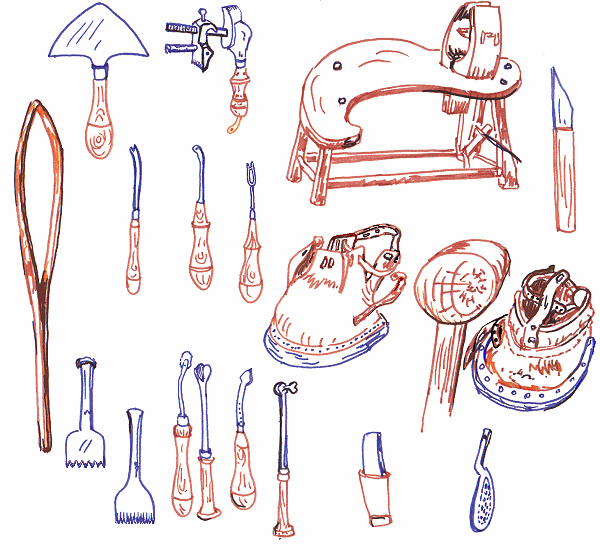|
The saddler would secure his supplies from the currier, who made leather supple, after it had come from the tanner, who converted the skin to leather. The tannery was found in the towns where, eventually, the currier process was combined, but a village might have a currier, unless this task was carried out by the shoemaker.
|
|
Saddlers made collars and harnesses, and specialised more in the towns. In the village he tried to cover as many leather goods and implements as possible, including saddles, bridles, pads for wagons, belts for farm equipment and shoes as well as riding equipment. There were tow divisions: the draught horses and the lighter products requiring as much skill. He co-operated with the wheelwright (especially given the manufacture of the connection from the cart to the horse) and the farrier.
|
|
His tools though were highly specialist for economic cutting, stitching, edging and marking leather. The thickest part of leather had to go where most wear was expected. Saddle making needed the skill of comfort for the rider and distribution of weight for the horse, and great skill in measuring and producing the right collar for every horse which was the working point of strain for the horse. A sedge collar might be fitted first for moulding to be covered with leather. Rye or good quality wheat straw was used with leather in collars.
|
|
The saddler has moved mainly to the towns now, and the work is more focused on leisure and personal uses of horses.
|

